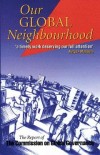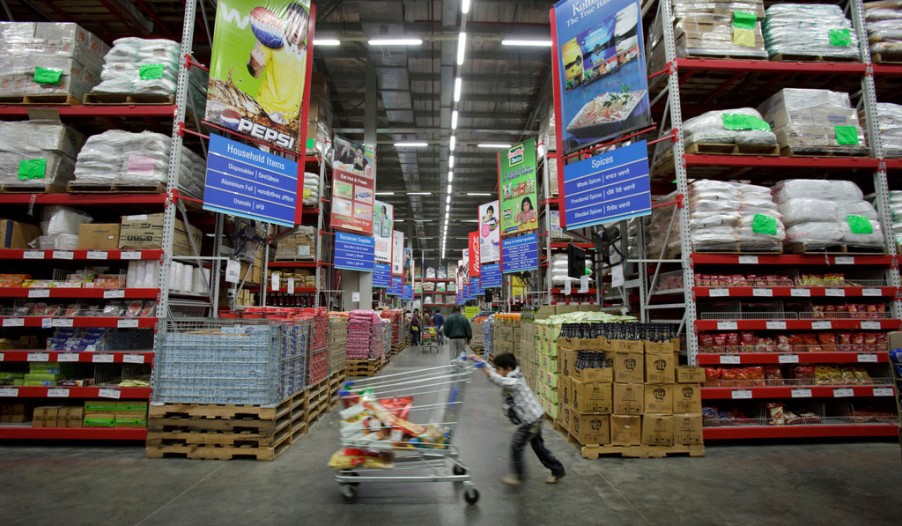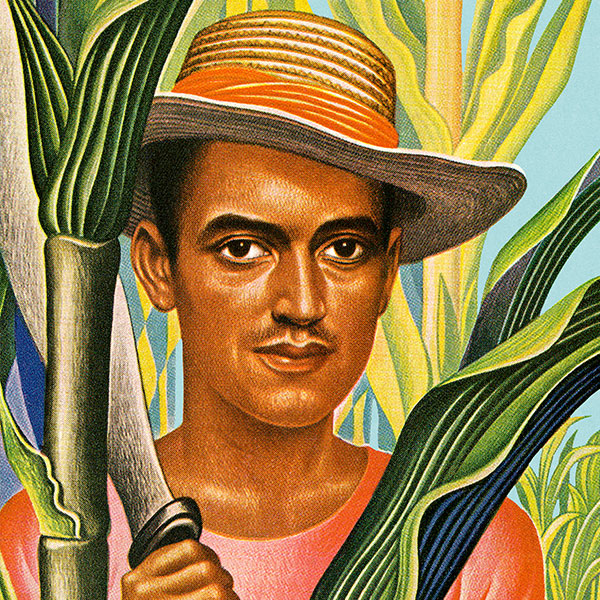Written by Prof Thomas G. Weiss and Prof Rorden Wilkinson
The Khanna mandi in India is said to be one of the largest grain markets in Asia. Millions of tonnes of wheat and rice are brought in by farmers each year from the surrounding fields of Punjab, the breadbasket region of the country, to be sold on by traders to government agencies and private buyers. These farmers are the kind of people – those with precarious livelihoods who exist away from the media spotlight – that have been largely excluded from the literature on global governance. This absence is puzzling because these same people are often deeply influenced by, and subjected to, the political and economic processes which such literature purports to study.
The exclusion of what we might call the ‘globally governed’ is a consequence of the way that global governance has come to be conflated almost singularly with the actions of intergovernmental institutions like the United Nations (UN) and the World Trade Organization (WTO). It has been analysed from the vantage point of New York and Geneva, where their high-profile meetings take place, rather than from the viewpoint of those actually on the receiving end. Scholarship has tended to focus on how institutions have been designed, decisions negotiated, and policies delivered – deployed within International Political Economy to study questions like ‘how did it become possible for multinational corporations to globalize neoliberalism?’ Attempts to understand the behaviour of the ‘global governors’ are therefore readily included in such analyses. Absent has been how global governance is experienced, that is, the way it is encountered at the everyday level.

The UN in New York and the market in Khanna: worlds apart?
Global governance from the bottom-up
How might this be done in the case of Khanna’s grain market? The behaviour of traders is shaped in part by the local application of international rules on how grain must be controlled for quality and safety, as well as the wider economic dynamics of the global commodity markets in which the physical market in Khanna is enmeshed. The prices paid by traders are crucial to the livelihoods of farmers. But there are other determinants at work too. Many farmers will also have participated in World Bank-underwritten and commercial microfinance schemes or perhaps been influenced by the complaint brought to the UN’s Food and Agricultural Organization (FAO) about the dangerous use of pesticides in the Punjab, or the project run by a US-based non-governmental organisation (NGO) to encourage organic cultivation.
Consider how the globally governed are presented in this video by the FAO
The traders and farmers might also have been affected by broader national changes emanating from global processes. This may involve labour market reforms encouraged by the International Monetary Fund; the roll-out of the UN’s 2030 Sustainable Development Goals; New Delhi’s efforts to gain an exemption for its national food-security legislation from WTO commitments; or World Health Organization projects targeted at rural areas. India’s involvement in these aspects of multilateralism exists alongside established relations with bilateral donors, such as the UK Department for International Development, and the work that these overseas development agencies carry out with NGOs, such as USAID’s partnership with the Indian-based Society for Research and Initiatives for Sustainable Technologies and Institutions.
Widening our lens to look at actors other than intergovernmental and non-governmental international organisations, we see the ways that other constituent parts of global governance spill over into Punjabi society and its economy. Global social movements striving to end female infanticide in India and business decisions by the multinational companies that have invested in the country’s food retail sector following the liberalization of foreign ownership rules are just two examples.
The goal of everyday global governance
Understanding the effects of global governance on individuals within a given context is a complex task. It also takes us far from the corridors of power, both intellectually and geographically, while also posing ethical challenges about how to conduct a more intimate study of some of the world’s poorest and most vulnerable people. So why not just stick to conducting desk research on World Bank documents or interviewing the staff of UN organisations? What is the goal of doing everyday global governance as outlined here?
First, it builds on existing scholarship that attempts to move studies of global governance beyond the confines of international organisation. In some respects, this returns us to the very birth of the concept, which was initially used by scholars in a post-Cold War context to highlight the growing political importance of non-state actors and the emergence of complex transnational regimes that seemed to be pulling together a new kind of world order – ‘governance without government’ as James Rosenau and Ernst Czempiel famously put it. But this distinction was soon lost as the concept was taken up with gusto in debates about the existence of, and need for more, co-ordinated global public policy – a position set out most notably by the 1995 report of the UN Commission on Global Governance.
 Studying everyday global governance immediately alerts us to the important roles played by a range of other actors and processes, recognizing their (unintended) collective effects and feedback loops. This perspective not only allows a more pluralist understanding of what global governance is, but does so while avoiding the other conceptual danger of ‘woolliness’, meaning that global governance becomes so all-encompassing that it cannot be used with any precision. Anchoring our characterisation of global governance in the experiences of particular groups offers one way to guard against this vagueness.
Studying everyday global governance immediately alerts us to the important roles played by a range of other actors and processes, recognizing their (unintended) collective effects and feedback loops. This perspective not only allows a more pluralist understanding of what global governance is, but does so while avoiding the other conceptual danger of ‘woolliness’, meaning that global governance becomes so all-encompassing that it cannot be used with any precision. Anchoring our characterisation of global governance in the experiences of particular groups offers one way to guard against this vagueness.
Second, adding the dimension of the globally governed is essential not only to better mapping out the system of world politics, but also to finding appropriate means to improve the lives of those most in need. In the current era, much of the practice of global governance originates in the Global North, undertaken by people whose knowledge of, and ability to empathise with, those in the Global South may be somewhat limited. By bringing into the purview of global governance studies the fate of farmers and traders in Khanna market – along with others in precarious positions, from refugees in Chad to sex workers in Mexico, among many others – we as scholars can play some small part in addressing this deficit. Indeed, because the successes, failures, and impacts of global governance have tended to be studied so narrowly, academics may even have been complicit in perpetuating outmoded, ineffectual, and paternalistic practices.
Ultimately, if global governance is to retain any conceptual value, it cannot simply be a descriptor for a post-Cold War moment. It must be used a mode of enquiry about how the world is ordered, of which an enquiry that proceeds from the perspective of individuals at the bottom as well as the top of the economic pyramid – the globally governed no less than global governors – must be an essential component.
Grain Resources
Acharya, A. (ed.) (2016) Why Govern? Rethinking Demand and Progress in Global Governance. Cambridge: Cambridge University Press.
Avant, D. D., Finnemore, M. and Sell, S. K. (eds.) (2010) Who Governs the Globe? Cambridge: Cambridge University Press.
Hewson, M. and Sinclair, T. (1999) Approaches to Global Governance Theory. Albany: SUNY Press.
Weiss, T. G. and Wilkinson, R. (2018 forthcoming) Rethinking Global Governance. Cambridge: Polity Press.
Hofferberth, M. (2015) ‘Mapping the Meanings of Global Governance: A Conceptual Reconstruction of a Floating Signifier’, Millennium: Journal of International Studies, 43: 2, pp. 598-617.
Finkelstein, L. S. (1995) ‘What Is Global Governance?’ Global Governance, 1: 3, pp. 367-372.
Weiss, T. G. and Wilkinson, R. (2018 forthcoming) ‘The Globally Governed: Everyday Global Governance’, Global Governance, 24: 2.




